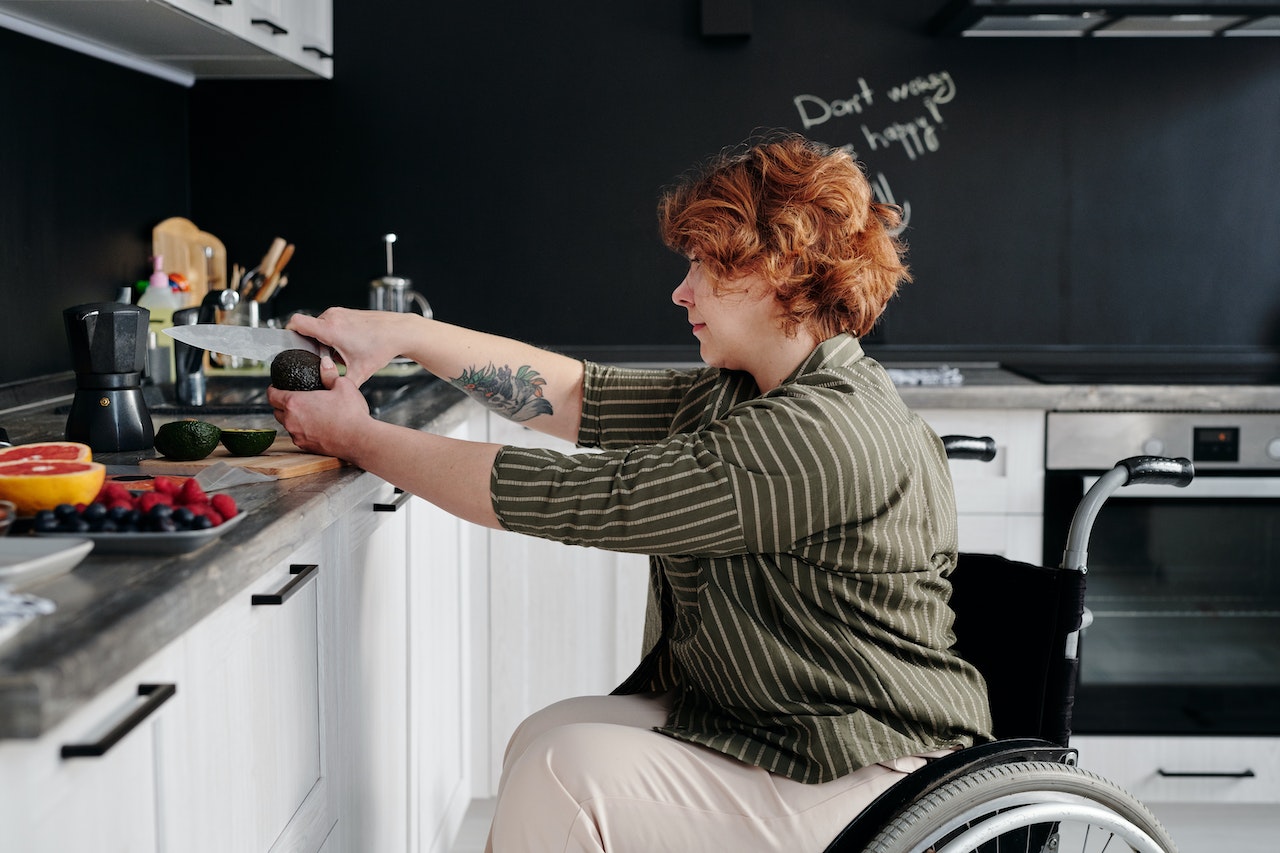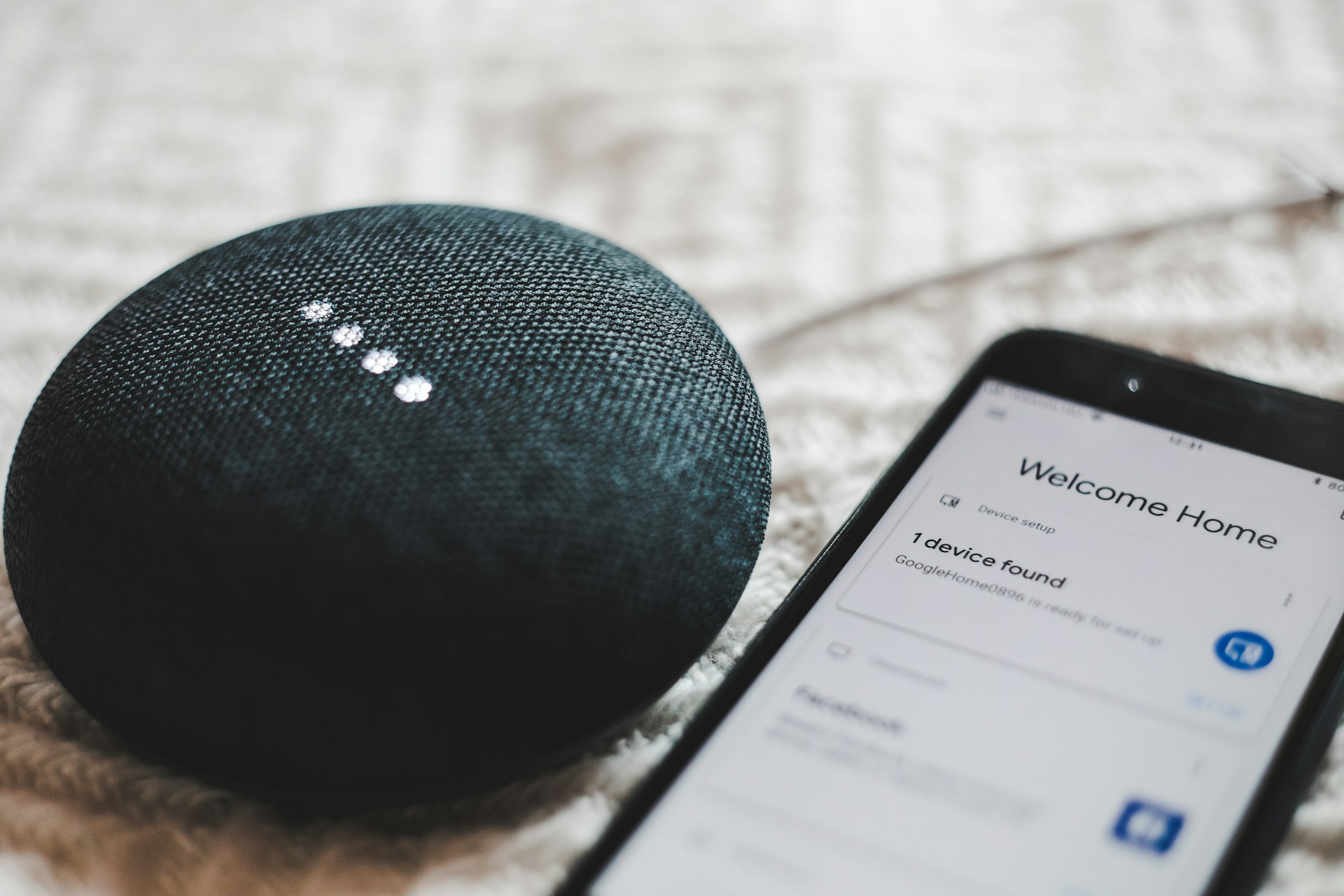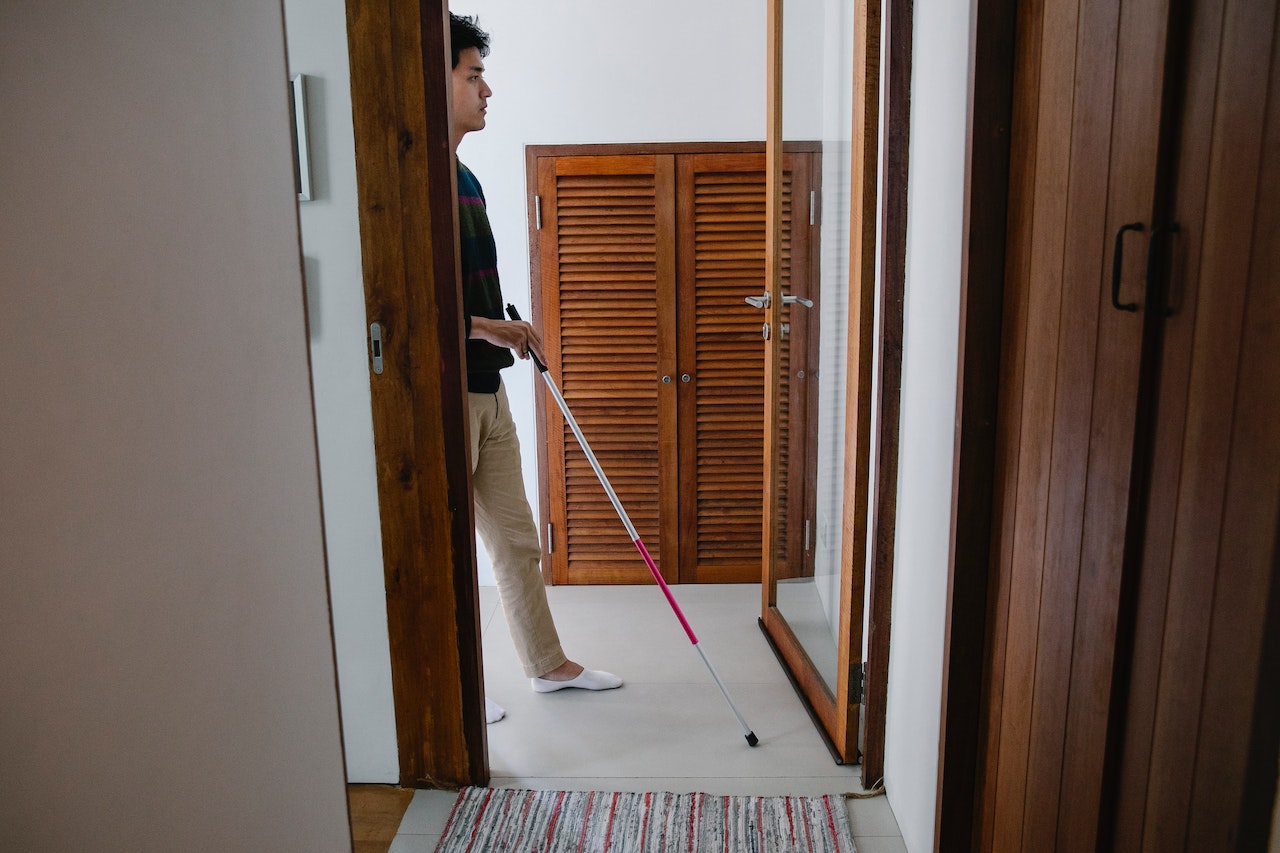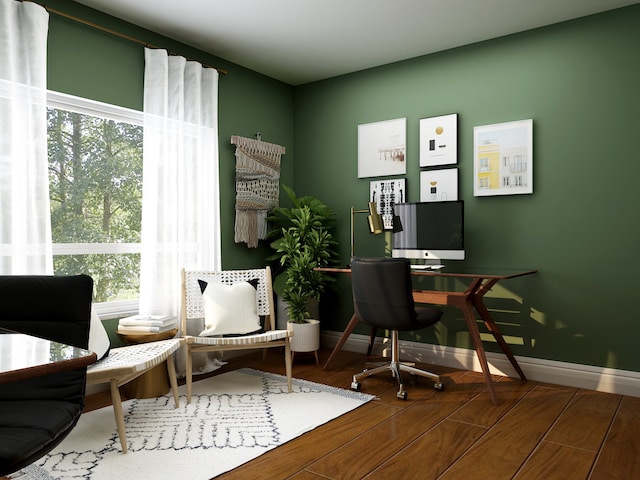Designing a kitchen that is accessible to individuals with disabilities goes beyond mere functionality; it’s about creating an inclusive space that fosters independence and convenience. In this article, we’ll explore key considerations for building an accessible kitchen and discuss how a home warranty can be a valuable asset in ensuring the longevity and reliability of your adapted features.
Key features of an accessible kitchen
Open layout:
-
- Prioritize an open layout to facilitate easy navigation for individuals with mobility aids such as wheelchairs or walkers.
- Ensure there’s enough space for a wheelchair to maneuver comfortably, allowing easy access to countertops and appliances.
Adjustable countertops:
-
- Install countertops at varying heights to accommodate individuals with different mobility levels.
- Consider incorporating pull-out or drop-down sections to allow seated or standing workspaces.
Accessible storage:
-
- Opt for cabinets with pull-out shelves and drawers, making it easier to reach items without the need to stretch or bend.
- Utilize adjustable shelving to accommodate varying reach capabilities.
Lever handles and touch controls:
-
- Replace traditional doorknobs and faucet handles with lever handles, which are easier to operate for those with limited hand strength.
- Choose appliances with touch controls for a more user-friendly experience.
Under-cabinet lighting:
-
- Install under-cabinet lighting to enhance visibility for individuals with visual impairments, ensuring a well-lit workspace.
Non-slip flooring:
-
- Select non-slip flooring materials to prevent accidents, especially in areas prone to spills like around the sink or stove.
Accessible appliances:
-
- Invest in appliances with front-facing controls and displays for easy reach and visibility.
- Consider side-opening ovens to eliminate the need to reach over a hot door.
Enhancing home security for your accessible kitchen
Creating an accessible kitchen is not only about optimizing the physical space for convenience and independence but also about ensuring the overall safety and security of the home. Here are some considerations to enhance home security in tandem with your accessible kitchen:
- Smart home security systems:
- Explore the integration of smart home security systems that provide real-time monitoring and alerts. These systems can include surveillance cameras, doorbell cameras, and motion sensors.
- Opt for systems with mobile app access, allowing homeowners to monitor their property remotely, providing an added layer of security and peace of mind.
- Accessible entryways:
- Install accessible entry systems such as keyless entry pads or smart locks. These features enhance security and make it easier for individuals with mobility challenges to enter and exit the home independently.
- Consider the use of voice-controlled or touchpad entry systems for added convenience.
- Lighting solutions:
- Implement well-lit pathways both inside and outside the house. Adequate lighting enhances visibility, reducing the risk of accidents and providing a heightened sense of security.
- Motion-activated lights around entry points, pathways, and potential blind spots create a more secure environment.
- Emergency response systems:
- Consider integrating emergency response systems, such as panic buttons or wearable devices with fall detection capabilities. These systems can be crucial in summoning help in case of emergencies, providing an additional layer of security.
- Secure windows and doors:
- Ensure that windows and doors are equipped with secure locks. Reinforce entry points to prevent unauthorized access.
- Explore window and door sensors that can alert homeowners to any unusual activity or attempted entry.
- Fire and carbon monoxide safety:
- Include fire and carbon monoxide detectors in your accessible kitchen and throughout the home. These detectors are crucial for the safety of all residents and can be integrated into a broader home security system.
- Regular maintenance and updates:
- Stay vigilant with the maintenance of security systems and conduct regular updates. Ensure that all components, including cameras, sensors, and alarms, are in optimal working condition.
- Regularly update access codes and passwords to enhance overall security.
By incorporating these security measures alongside your accessible kitchen features, you create a home environment that not only supports independence but also prioritizes the safety of all residents. A well-rounded home design approach considers accessibility and security, resulting in a harmonious and welcoming living space.
Building an accessible kitchen is a transformative step towards creating an inclusive living space. By considering the specific needs of individuals with disabilities during the design process and incorporating features that promote independence, you contribute to a more accessible and welcoming home environment. Additionally, a home warranty can be a valuable tool in ensuring the continued functionality and reliability of your adapted kitchen, providing peace of mind for the long term. Read on to learn some tips and advice from the experts.
What are some key considerations when adapting a kitchen for accessibility?
- Counter and table heights. Standard counters are typically 36 inches high, which may be too high for wheelchair users. Lower counters to 34 inches or install adjustable height counters to allow for a range of heights. Tables should also be lowered to 30 inches or less.
- Aisle widths and turning spaces. Aisles should be at least 36 inches wide to allow for wheelchairs to pass through. Additionally, there should be enough space for wheelchair users to make a 180-degree turn. This may require widening doorways and removing obstacles from the kitchen floor.
- Storage solutions. Rethink the way you store kitchen items to make them more accessible. Remove lower cabinets to create knee space, and replace high cabinets with pull-down shelving systems. Use pull-out drawers and lazy susans to make items easier to reach.
- Appliance controls. Appliance controls should be placed at a height that is easy for wheelchair users to reach. Consider installing appliances with touch-screen controls or voice-activated controls.
- Lighting. Good lighting is essential for a safe and accessible kitchen. Use glare-free lighting and task lighting to illuminate work areas.
- Flooring. Choose a flooring material that is slip-resistant and easy to clean.
- Color contrast. Use color contrast to make it easier to see objects and navigate the kitchen. For example, use contrasting colors for the walls, counters, and appliances.
- Individuals with visual impairments. Use bright colors and contrasting textures to make objects and surfaces more visible. Consider installing raised lettering or Braille on appliance controls and other important items.
- Individuals with hearing impairments. Use visual cues to alert people to sounds, such as flashing lights or vibrating alarms. Consider installing a doorbell that lights up and makes a loud noise.
- Individuals with mobility impairments. Use grab bars and other safety features to prevent falls. Make sure there is enough space for wheelchairs to maneuver throughout the kitchen.
Michael Corso – disABLEDperson
What are some considerations for designing a kitchen that accommodates the needs of wheelchair users?
Designing a kitchen that accommodates wheelchair users is vital for creating an inclusive space. At Electric Wheelchairs USA, we understand how important it is to have a kitchen space that is comfortable and useful for someone who is wheelchair-bound.Here are a few important key considerations when designing an accessible kitchen:
Adjust Counter and Table Heights: Standard counters may be too high for wheelchair users. Lower them or incorporate adjustable-height sections to facilitate easy access.
Aisle Widths and Turning Spaces: Ensure aisles are at least 36 inches wide. Additionally, allocate about 60 inches of space for wheelchairs to make a 180-degree turn.
Rethink Storage Solutions: Remove lower cabinets for knee space under sinks, counters, and cooktops. Replace high cabinets with pull-down shelving systems for easier access.
Appliance Selection: Opt for side-opening ovens, front-control cooktops, and drawer-style dishwashers. These configurations are more accessible and user-friendly.
Hardware Choices: Utilize lever handles, touch-sensitive faucets, and D-shaped pulls on drawers and cabinets. These are easier to operate for those with limited hand mobility.
Floor Material: Choose slip-resistant flooring materials to reduce the risk of accidents. Ensure it’s smooth enough for easy wheelchair movement.
By incorporating these considerations, you can craft a kitchen that’s not only compliant with accessibility standards but also genuinely inclusive and functional for wheelchair users.
Kellon Ambrose – Electric Wheelchairs USA
Lowered Countertops and Workspaces:
Installing lowered countertops is a vital modification for an accessible kitchen. By reducing the height, individuals using wheelchairs or those with limited mobility can easily reach and utilize the countertop space. This adaptation ensures that food preparation, cooking, and other kitchen activities are within comfortable reach, promoting independence and safety.
Adjustable Cabinetry and Shelving:
To make kitchen items more accessible, incorporate adjustable cabinetry and shelving solutions. Pull-out shelves and drawers installed at lower heights provide easy access to cookware, utensils, and pantry items. Adjustable shelving allows for customization, accommodating various heights and storage needs. These modifications enhance convenience and usability for individuals with limited mobility.
It seems like new and power-hungry kitchen tools are regularly introduced into our ever-evolving, technologically advanced homes. As a result, there are never enough outlets for all those trendy cooking gadgets, beverage dispensers, or mobile devices. Outlet placement is probably one of the most overlooked design elements to consider when adapting your kitchen to be more usable and inclusive. And since kitchen outlets are generally positioned over countertops, their location should be thoroughly analyzed to ensure they are reachable by everyone. As a rule of thumb, outlets over countertops should be 44 inches maximum above the floor. Anthropomorphic studies indicate that a person in a seated position can reasonably reach 24 inches over a 34-inch-high obstruction. This means if you are adapting your kitchen for wheelchair or powerchair users, base cabinets and countertops should be 24 inches maximum deep and 34 inches maximum high. Since appliances are often deeper/higher than countertops, as much room as possible adjacent to and between appliances should be provided. We recommend 48 inches minimum adjacent to and between appliances. This includes between appliances and corners and between appliances and walls. If space does not allow such clearances, consider backsplash extender box outlets or countertop pop-up outlets.
Accessible Sinks and Faucets:
Consider installing sinks with adjustable heights or shallow basins to accommodate individuals who use wheelchairs or have difficulty reaching deep into traditional sinks. Lever-style faucets are user-friendly, requiring less hand strength and dexterity to operate. By making these modifications, you create a sink area that is accessible and functional for everyone.
Enhanced Lighting and Contrast:
Proper lighting is essential in an accessible kitchen. Ensure the space is well-lit with bright, even lighting to aid individuals with visual impairments. Additionally, use contrasting colors on countertops, cabinetry, and flooring to improve visibility and assist with orientation. These simple adjustments can make a significant difference in the accessibility of your kitchen.
What considerations should be kept in mind when making a kitchen accessible for individuals with visual impairments?
Your second priority should be keeping things in the same place so that you don’t have to search. Use silverware dividers to separate items in drawers. Consider getting various-sized canisters for dry ingredients. Use baskets or other storage containers to keep items from getting scooted across the counter. Use tactile markers to quickly identify items by touch.
When cutting items, place the item on a large cookie sheet to keep from knocking things onto the floor. Use color contrast wherever possible, and make sure you have good lighting if you are low vision. When using a recipe, measure out all your ingredients first and line them up on the counter in the order you will need them.
The most important thing is to be creative! Solutions for the kitchen can be made from goods easily acquired at your local Walmart or home improvement store. Find out what works for you, and don’t be afraid to try new things!
What are some essential kitchen safety tips for caregivers of individuals with dementia?
The kitchen is arguably the most dangerous room in the home for anyone. Using sharp knives, heavy pots, breakable dishes, high heat and running water requires attention skills, memory skills—and rational thinking skills (i.e. recognizing cause and effect, sequencing, perceiving risk). Dementia takes away all these skills, but you can still enjoy working in the kitchen together.
Losing the ability to control attention means people are distracted easily. With memory loss as well, they’ll leave water running or forget they’ve put a pot on the stove, so limit distractions and become their kitchen partner (not instructor: that increases risk and conflict). Losing sequencing means they won’t be able to follow more than one suggestion at a time, so voice just the next step in the task. Losing cause and effect means they won’t be able to perceive that pots can burn dry and cause fires, but don’t try to explain. Explaining to someone who’s lost rational thinking is like pointing things out to someone who’s lost sight.
Instead of explaining why, describe what you’re doing. “Discover” risk and fun together as partners. Be teammates exploring tastes and smells. Sampling foods while creating meals is a great way to encourage someone to eat when they’ve lost the desire.
Judy Cornish – the DAWN Method
How can touch and sensory cues be added to an accessible kitchen to help individuals with visual impairments navigate the space?
Varying textures can help anyone who is blind. Color contrast can be invaluable for someone who is visually impaired but not completely blind.
Flooring and Surface Considerations:
Choosing the right flooring and surfaces is crucial for creating a safe and accessible kitchen. Opt for non-slip flooring materials to minimize the risk of falls and ensure a stable surface. Smooth and seamless flooring facilitates easy movement for individuals using mobility devices. Additionally, consider installing heat-resistant countertops to prevent burns and make the kitchen environment safer.
Assistive Technology:
Incorporating assistive technology can greatly enhance the accessibility of your kitchen. Voice-activated smart home devices, adjustable-height kitchen appliances, and accessible control interfaces enable individuals with disabilities to operate kitchen equipment independently. Research and explore the latest assistive technologies to find solutions that align with your specific needs.
What changes can be made to create a calm and organized environment in an accessible kitchen for people with autism?
Creating a calm and organized environment in an accessible kitchen for individuals with autism involves implementing several key changes. First, excessive stimuli should be reduced in order to manage sensory sensitivities. The use of soft, diffused lighting in place of harsh illumination, the use of insulation or noise-canceling materials to reduce excessive noise, and a stay away from pungent aromas are all ways to do this.
In order to encourage a sense of order, visual organization is essential. To make it easy to recognize and locate objects, clear storage containers, labels, and color-coded systems should be used. To give stability and lessen worry, the kitchen arrangement must be kept constant.
Kitchen procedures are much easier to grasp and follow for autistic people when they are given visual support. Clear action sequences can be provided by breaking tasks down into manageable steps and visually showing them using illustrations or textual directions. To create a secure atmosphere, safety precautions, including heat-resistant materials, cabinet locks, and visible safety rule reminders, are to be used.
Comfort and noise reduction can be provided by sensory-friendly materials like cushioned, non-slip flooring. It is best to choose utensils and cookware with handles that are comfortable for all senses. Adding a distinct seating area to the kitchen or close by enables people to unwind while still participating in the cooking operations.
A sense of tranquility can be encouraged by incorporating relaxing factors like plants, soft textures, and sensory fidgets.
People are helped in communicating their requirements or preferences in the kitchen by communication aids like picture cards or a communication board. A kitchen environment that is specially designed to fulfill the needs of people with autism while taking into account their individual preferences and sensitivities can be achieved by consulting with speech pathologists, occupational therapists, or autism specialists.
Lois Brady – Autism Digest
What are some common mistakes or oversights to avoid when designing an accessibility kitchen?
The most common mistake we see in creating an accessible kitchen is mounting the microwave too high! Microwaves are frequently mounted above ranges and integrated into range hoods however this makes it extremely challenging for someone seated, of shorter stature or who is unsteady to safely reach for their hot food. The best place for a microwave is at counter-height, that way everyone can reach it safely and without the fear of spilling hot soup.
Another oversight to be mindful of is selecting your appliances. The range can be separated from the oven so that the oven can be mounted at a height that works for you, with a heat-resistant platform that can pull out allowing you to place hot dishes on it before moving them to another work surface. Another simple modification would be to ensure you purchase a range with knobs on the front rather than the rear panel which prevents you from reaching over hot elements increasing the chance of burns.
Lastly, ensure that you are installing soap and paper towel dispensers within reach of the sink and if possible, ensure there is knee clearance under the sink so that someone seated can wash their hands comfortably.
Karin Pasqua – Meaningful Access Consulting
What measures should be taken to ensure electrical safety in a kitchen that’s adapted for people with disabilities?
Cooking is the leading cause of home fires and fire injuries. Ranges or cooktops cause 62% of home fires, according to the National Fire Protection Association. Learn how to stay safe with these tips:
Keep anything that can catch fire away from your stovetop.
Always unplug countertop alliances when not in use.
Make sure you have GFCI receptacles in your kitchen to prevent shock and electrocution.
Double-check that everything is off when you finish cooking.
Prevent fires by keeping your oven and stovetop clean of grease and dust.
Never leave the kitchen while cooking.
Never cook while sleepy, drinking alcohol, or taking medication that makes you drowsy.
Never disable a smoke alarm while cooking.
Never use a cooking stove to heat your home.
Brianne Deerwester – Electrical Safety Foundation
What are some assistive listening devices or systems that can be integrated into an accessibility kitchen for individuals with hearing loss?
Cooking with a partner can be a delightful experience, but for individuals with hearing loss, it can present unique challenges. Sizzling, running water, and a lack of lip-reading are all challenges for those who are hard of hearing.
We love Phonak’s Roger microphone in the kitchen. Phonak Roger has the capability to stream audio directly to compatible hearing aids. The direct streaming empowers those with hearing loss to actively engage in conversations without missing out on important instructions or banter.
Roger microphone excels in managing background noise, a common hindrance in the kitchen environment. Its advanced technology filters out unwanted sounds, such as clattering dishes or sizzling pans, while focusing on the voice of the partner wearing the microphone. This noise reduction feature ensures clear audio transmission, enabling individuals with hearing loss to concentrate on the conversation, even in a bustling kitchen. You can read our full review of Roger here.
How it works: Roger can sit on a countertop or clip to a partner’s clothing. This hands-free approach allows individuals to move freely without worrying about the microphone’s placement, fostering uninterrupted communication throughout the cooking process.
Roger works with various hearing aid brands, but hearing aid wearers can also use their iPhone to capture some of Roger’s benefits with existing technology.
Blake Cadwell – Soundly
Are there any specific appliances or kitchen fixtures that are recommended for an accessibility kitchen?
Designing an accessible kitchen is all about making life easier and more inclusive. By selecting the right appliances and fixtures, you can create a functional space that caters to everyone’s needs. Check out our top recommendations to take your kitchen to the next level for accessibility:
1. Adjustable Countertops: Say goodbye to discomfort with countertops that can be raised or lowered at the touch of a button. Ideal for wheelchair users or those who prefer to sit while cooking.
2. Side-Swing Ovens: Safety meets accessibility with side-swing doors. No more straining or risk of burns for individuals in wheelchairs.
3. Front-Operated Appliances: Make life simpler with appliances that have controls conveniently located in the front. No more reaching over or around to adjust settings or access compartments.
4. Drawer Dishwashers: Loading and unloading dishes has never been easier. Say goodbye to bending and straining with a dishwasher conveniently located at a lower position.
5. Touchless Faucets: Wave goodbye to traditional faucets with touchless technology. Control water flow without the need for gripping or twisting handles.
Creating an accessible kitchen is a personal journey, so it’s essential to consider your individual needs. Seek guidance from experts in accessible design to ensure the best outcome for your unique situation.
Kjersten – Home Kitchenary
What essential items should be included in an emergency kit for individuals with disabilities in the kitchen?
When it comes to kitchen medical supplies for people with disabilities, it is important to prioritize items that can enhance safety, accessibility, and independence.
An adaptive cutting board can be helpful for people with limited dexterity or strength in their hands. These boards typically feature non-slip surfaces and corner guards for enhanced stability to prevent accidents like slipping. Adaptive cutting boards can help ensure a safer experience for people with disabilities in the kitchen.
One-handed utensils are specifically designed for individuals with limited hand function or the ability to use only one hand. One-handed kitchen utensils feature ergonomic handles, weighted bases for balance, and specialized grips. One-handed utensils can include knives, peelers, can openers, and utensil sets.
Non-slip mats are an essential addition to any kitchen to prevent slips and falls. These kitchen medical supplies for people with disabilities provide stability and reduce the risk of accidents. Non-slip mats work especially well for individuals using mobility aids or those with balance issues. Many non-slip mats also serve as anti-fatigue mats. Standing for prolonged periods can cause muscle strain and discomfort, which can be exacerbated for people with disabilities. Non-slip anti-fatigue mats provide cushioning and support to the feet and legs, reducing the impact on joints and helping individuals with disabilities stay comfortable during kitchen activities. Non-slip mats can be placed near the sink, stove, and food preparation areas.
Reacher or grabber tool. This handy device allows individuals to retrieve items from high or low places without bending, stretching, or reaching overhead. It can assist in accessing items from cabinets, shelves, or the refrigerator, reducing the risk of strain or injury.
Ensuring home safety for wheelchair users
Adapting your home for an accessible kitchen involves careful planning and consideration of individual needs. By implementing modifications such as lowered countertops, adjustable cabinetry, accessible sinks, enhanced lighting, and assistive technology, you can transform your kitchen into a space that promotes independence, inclusivity, and safety. Remember to consult with professionals such as occupational therapists or kitchen designers who specialize in accessibility to ensure that your modifications are tailored to your unique requirements. An accessible kitchen is a valuable investment that enhances the quality of life and empowers individuals to fully participate in the joys of cooking and meal preparation.




